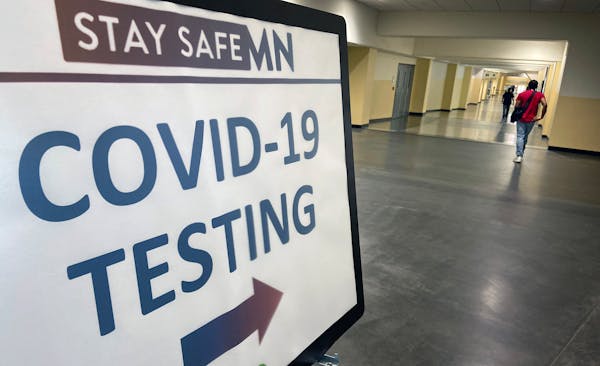Six more COVID-19 deaths were reported Tuesday in Minnesota, bringing the state's total in August so far to 94 — nearly doubling the July total of 53 and reflecting the continued threat of the pandemic despite vaccination progress.
The highly infectious delta variant of the coronavirus has caused a new COVID-19 wave over the past two months, dashing hopes earlier in the summer for an end to the pandemic that prompted Minnesota leaders to lift a statewide mask mandate and social distancing requirements.
The state on Tuesday reported 3,882 more coronavirus infections, reflecting COVID-19 activity over the three-day weekend, and an increase in the positivity rate of diagnostic testing to 6.6%.
State health officials encouraged unvaccinated people to seek shots, because all three available COVID-19 vaccines have shown strong protection against severe illness, hospitalization and death. Gov. Tim Walz on Tuesday lauded the availability of vaccine at the Minnesota State Fair, where more than 1,100 visitors have already received shots along with a $100 gift card incentive.
Minnesota's first-dose vaccination rate is now 70.5% among eligible people 12 and older, and almost 60% for the entire population.
"Don't miss this opportunity," Walz said in a statement. "If you're already going to be at the State Fair, get your shot and get your cash."
The U.S. Food and Drug Administration issued emergency approval of the two-dose Moderna and Pfizer vaccines, and the single-dose Johnson & Johnson vaccine, based on their effectiveness in clinical trials against severe illnesses.
Subsequent studies suggest that while they were also effective at preventing any infections, including asymptomatic cases, that additional benefit has tapered off because of the emergence of the highly infectious delta variant.
As a result, state health officials said increased testing is needed to diagnose infections and track the spread of the pandemic. They reopened free saliva testing sites in St. Paul and Bloomington this week after closing them two months ago when COVID-19 numbers were declining.
"Combined with social distancing, masking and staying home when sick, testing can help us slow the spread of the delta variant as we continue to get as many folks vaccinated as possible," state Health Commissioner Jan Malcolm said.
Testing resumed Tuesday at Roy Wilkins Auditorium in St. Paul and will be available each week, 11 a.m. to 6 p.m. Monday through Thursday and 11 a.m. to 4 p.m. on Sundays.
Testing also resumed Monday in Bloomington at a former Department of Motor Vehicles facility and will be available from 11 a.m. to 6 p.m. on weekdays.
State testing sites remain open in Winona, Moorhead, Duluth, Brooklyn Park and Minneapolis-St. Paul International Airport and are moving to new locations to accommodate demand in Mankato and St. Cloud.
The number of COVID-19 deaths in August so far remains lower than earlier in the pandemic. There were at least 261 COVID-19 deaths in the state in April, at the peak of this spring's wave, and at least 1,768 deaths last December — Minnesota's deadliest month in the pandemic.
A new federal COVID-19 state profile report on Tuesday said Minnesota had the ninth lowest rate of new COVID-19 deaths in the United States and the 16th lowest rate of new infections.
State health officials remain concerned about the impact of group gatherings and events, along with the start of school, in fueling more viral spread. Seven outbreaks of three or more infections among unrelated people have been identified at fairs or festivals so far in August, along with 17 in July. Fifteen outbreaks at weddings in Minnesota have been identified over the past two months.
Tuesday's figures raised Minnesota's totals in the pandemic to 7,811 COVID-19 deaths and 649,964 diagnosed coronavirus infections. More than 35,000 Minnesotans have been admitted with COVID-19 to hospitals in the U.S. since the start of the pandemic.
Hospitals in Minnesota have reported a lack of bed space in the latest wave, with 589 people with COVID-19 taking up inpatient beds in the state as of Monday.
Traumas, surgeries, strokes and an unusual summer surge of respiratory syncytial virus (RSV) have combined to fill up space in Minnesota hospitals, which are reporting that 93% of intensive care beds are full.

The 5 best things our food writers ate this week

A Minnesota field guide to snow shovels: Which one's best?

Summer Camp Guide: Find your best ones here

Lowertown St. Paul losing another restaurant as Dark Horse announces closing

